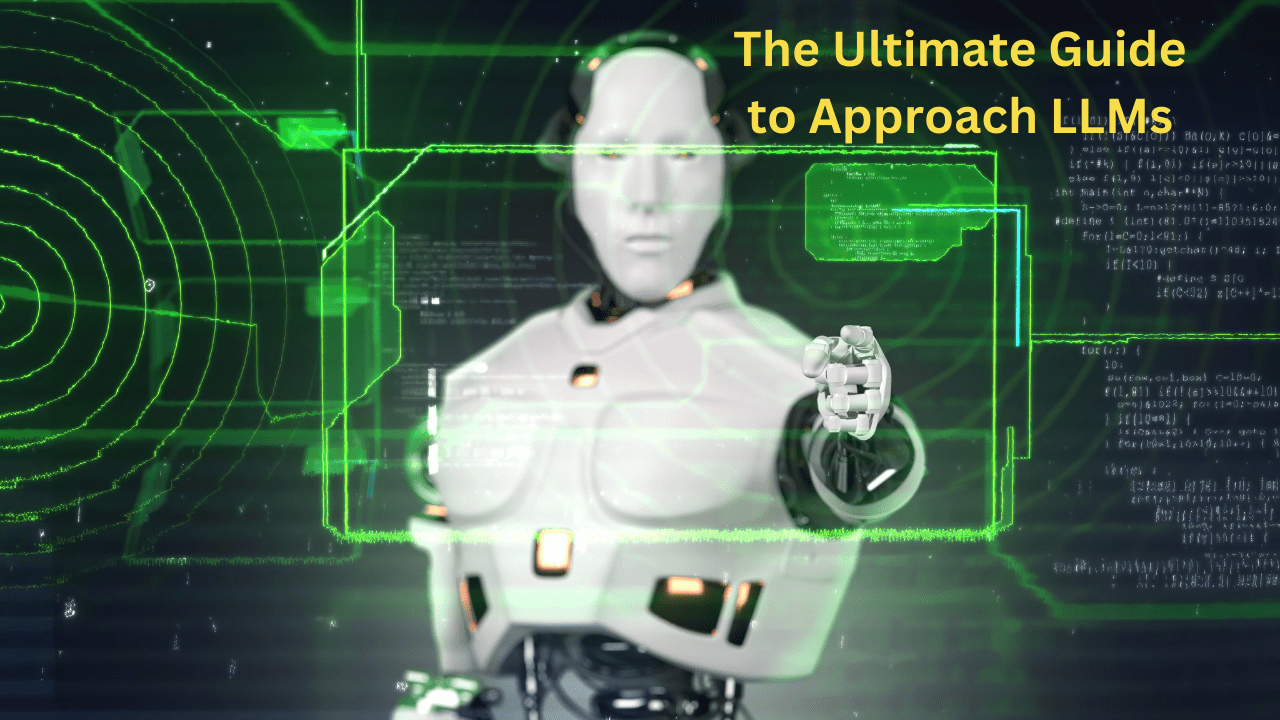
Image by Author
Large Language Models (LLMs) are powerful natural language processing models that can understand and generate human-like context, something never seen before.
With all that prowess, LLMs are in high demand, so let’s see how anyone can learn about them, especially in the post-GPT world.
Back to Basics
Fundamentals are evergreen, so it is best to start from the basic concepts by building an agile mindset to ramp up on any new technology quickly. Asking the right questions early on is crucial, such as:
- What is new about this technology, and why is it considered a breakthrough development? For example, when talking about Large Language Models, consider breaking them into each component – “Large, Language, and Models”, and analyze the meaning behind each of them. Starting with largeness – understand whether it is about the largeness of the training data or concerns model parameters.
- What does it mean to build a model?
- What is the purpose behind modeling a certain process?
- What was the prior gap that this innovation bridges?
- Why now? Why did this development not happen before?
Furthermore, learning any new technological advancement also requires discerning the challenges that come with it, if any, and how to mitigate or manage them.
Building such an inquisitive mindset helps connect the dots to understand the evolution that if something exists today – is it in some way building on the challenges or gaps of its predecessors?
What’s Different with the Language?
In general, computers understand numbers, hence, understanding language requires the conversion of sentences to a vector of numbers. This is where the knowledge of Natural Language Processing techniques (NLP) comes to the rescue. Further, learning a language is challenging, as it involves identifying intonation, sarcasm, and different sentiments. There are situations where the same word can have different meanings in different contexts, emphasizing the importance of contextual learning.
Then, there are considerations, such as, how far into a sentence is the context, and how a model knows the context window. Going a level deeper, isn’t this how humans pick context by paying attention to specific words or parts of sentences?
Continue thinking along these lines and you will relate with the attention mechanism. Building these foundations helps develop a mind map, shaping an approach to a given business problem.
No One Course!!!
Unfortunately, everyone looks for one single resource which can make it easier to learn a concept. However, that is where the problem lies. Try internalizing a concept by studying it from multiple resources. Chances are high that you would understand a concept better if you learned it from multiple viewpoints rather than just consuming it as a theoretical concept.

Image by author
Following the leading industry experts, such as Jay Alammar, Andrew Ng, and Yann LeCun, is helpful too.
Tips for Business Leaders
As the AI teams get ramped up on learning rapidly evolving developments, businesses are also working on finding the right problems that justify the use of such sophisticated technology.
Notably, LLMs trained on generic datasets can do good to accomplish general tasks. However, if the business case demands domain-specific context, then the model must be provided with sufficient context to give a relevant and accurate response. For example, expecting an LLM to respond to a company’s annual report requires additional context, which can be done by leveraging Retrieval Augmented Generation (RAGs).
But before going deep into the trenches of advanced concepts and techniques, it is suggested that businesses first develop trust with the technology by trying low-hanging projects, that allow them to see the results quickly. For example, picking initiatives that are not directly customer-facing or deal with sensitive data issues is good to start with, so that their downside can be controlled timely if the solution goes rogue.

Image by Author
Businesses can start seeing the impact, and thereby reap potential returns, by leveraging AI for creating marketing copy, writing drafts and summaries, or generating insights to augment the analysis.
Such applications give a preview of not just the capabilities and possibilities but also the limitations and risks that come with these advanced models. Once AI maturity sets in, businesses can accelerate efforts in AI to build their competitive edge, delighting customer experience.
The Trust Factor
Talking about trust, business leaders also share a big responsibility of communicating the right and effective approach to using LLMs with their developer community.
As developers begin learning LLMs, inquisitiveness may quickly lead to using them in their day-to-day tasks such as writing code. Hence, it is important to consider whether you can rely on such code, as they could potentially make mistakes, such as writing oversimplified code, or not covering all edge cases. The suggested code might even be incomplete or too complex for the use case.
Hence, it is always advised to use the LLM output as a starting point and iterate over it to meet the requirements. Test it on different cases, review it yourself, pass it through peer review, and refer to some established and trusted resources to validate the code. It’s crucial to thoroughly analyze the model output to ensure there are no security vulnerabilities and verify that the code aligns with best practices. Testing the code in a safe environment can help identify potential issues.
In short, keep refining till you are confident it is reliable, efficient, complete, robust, and optimal.
Summary
Adapting to quickly learn and use the new technological advancements takes time, so it is best to resort to the collective knowledge of how peers in the industry are approaching it. This post is in line with sharing some of those best practices and evergreen principles that will allow you to embrace the technology like a leader.
Vidhi Chugh is an AI strategist and a digital transformation leader working at the intersection of product, sciences, and engineering to build scalable machine learning systems. She is an award-winning innovation leader, an author, and an international speaker. She is on a mission to democratize machine learning and break the jargon for everyone to be a part of this transformation.
- SEO Powered Content & PR Distribution. Get Amplified Today.
- PlatoData.Network Vertical Generative Ai. Empower Yourself. Access Here.
- PlatoAiStream. Web3 Intelligence. Knowledge Amplified. Access Here.
- PlatoESG. Carbon, CleanTech, Energy, Environment, Solar, Waste Management. Access Here.
- PlatoHealth. Biotech and Clinical Trials Intelligence. Access Here.
- Source: https://www.kdnuggets.com/the-ultimate-guide-to-approach-llms?utm_source=rss&utm_medium=rss&utm_campaign=the-ultimate-guide-to-approach-llms



